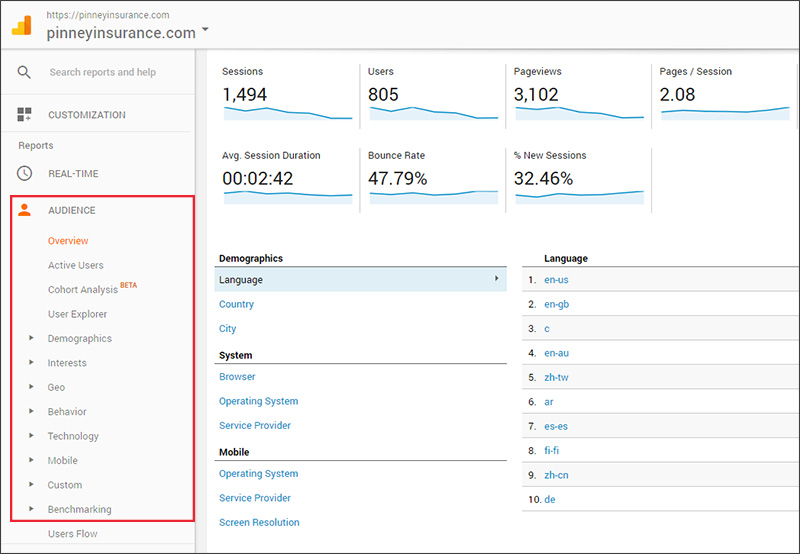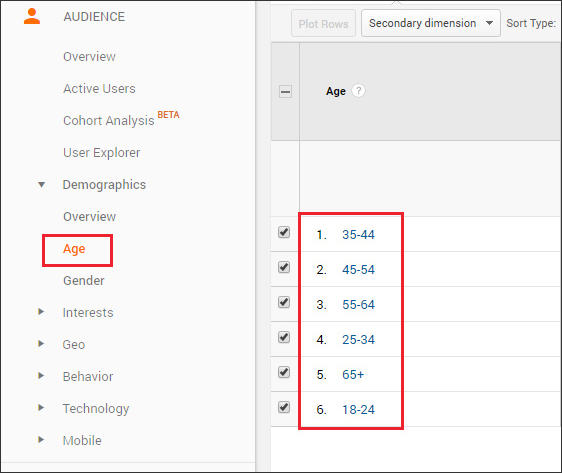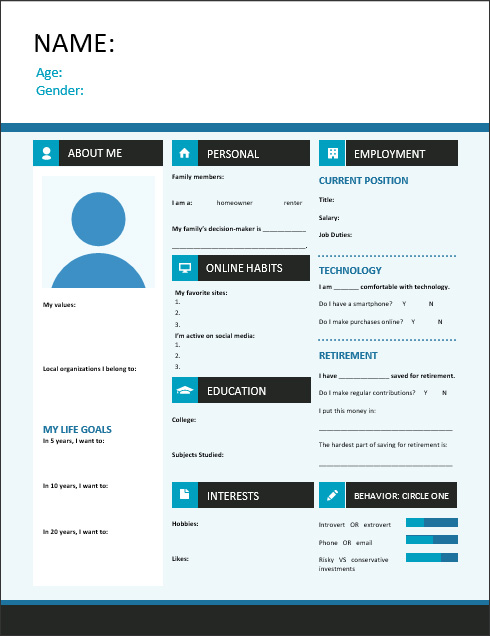
A buyer persona is a description of your ideal client. You may think you already know who this is, so why make more work for yourself by writing it down? There’s a good reason, because it can help you focus your marketing efforts – and close more sales.
Having a well-thought-out buyer persona helps you focus your marketing energy. Instead of speaking to many people, you only need to speak to one – your persona.
Why It Works
When you create a buyer persona, it forces you to answer several questions that can make your marketing much more effective:
- What are my clients’ demographics?
- What are my clients’ interests and concerns?
- Who makes financial decisions in their family?
Once you have a buyer persona, you can pretend you’re speaking or writing to them directly. It makes your writing less stilted, more casual, and more effective. Plus, it’s easier to create relevant content when you’re having a conversation with “Mary Mitchell,” for example, than it is to be relevant to a general list of 5,000 names.
Researching Your Persona
To create your buyer persona, you’ll need to do a bit of research. Think of yourself as a detective, tracking down clues that lead you to your ideal buyer. The purpose of this research is to gather information you can use to fill out your buyer persona profile (see the next step).
Remember, you can have more than one buyer persona – in fact, it’s probably better that way. Since life insurance isn’t a one-size-fits-all product, you may want to create personas based on product type, or the 2-3 most common demographics among your current book of business.
Here are a few ideas for researching customer demographics:
- Take an existing client from your book of business that you feel represents your ideal client. Google him or her, and click through to any social media profiles that come up. If you don’t want to be tracked, you can do this in Chrome’s incognito mode. The goal here isn’t to track down any personally identifiable information. The goal is to look at what they share and cross-post: do they only post to Facebook from Instagram? Which sites and news sources do they share stories from regularly? What stories get their attention?
- Survey your book of business – it never hurts to get this information straight from the source! You can also post your survey link on your social media profiles to learn more about your followers. This is free and easy to do when you use Google Forms. This post shows you how to do it - take a look at step 3.
- See what Google Analytics can tell you. Did you know Google Analytics can give you demographic information about your site visitors? Click any of the categories under “Audience” on the left in the screenshot below:
 For example, we clicked on Demographics and Age to see which age group visits our website most often. A statistic like this would help you create your ideal buyer profile – is your visitor more likely to be a young 20-something (just starting out in the job market, probably doesn’t have a family of their own yet) or an established 40-something (thinking about paying for retirement and college for the kids)?
For example, we clicked on Demographics and Age to see which age group visits our website most often. A statistic like this would help you create your ideal buyer profile – is your visitor more likely to be a young 20-something (just starting out in the job market, probably doesn’t have a family of their own yet) or an established 40-something (thinking about paying for retirement and college for the kids)?

- Check Your Facebook Insights. If you have a Facebook page with at least 100 likes, there’s a surprising amount of information Facebook can give you. Click Insights on the top of your page, and you can see demographic information about the age and location of your Facebook fans, as well as people who have interacted with your page:

Creating Your Persona
Your persona is a fictional character, like in a book or movie. You get to create them based on the information you gathered during your research. Pretend you’re “casting” the role, right down to the name, where they live, their family members, jobs, habits, favorites, and more.
We created a free buyer persona template for you to use, in two formats. Click here to download it as a Word doc, and here to download it as a fillable PDF form.

You can fill it out and then print it, or print it out and do it longhand. We’ve even left a space for a photo. Having that image really helps your mind grasp the concept that you’re talking to a person, not a generic audience. Use a magazine cutout or free stock photo to characterize your profile(s).
Our template includes the must-have questions you’ll want to answer, like:
- What is this person’s name, age, gender, and educational background?
- Describe this person’s values.
- What does this person do for fun?
- Where does this person work? How much money do they make?
- What websites does this person visit on a daily or near-daily basis?
- Is this person an introvert or an extrovert?
- What social media networks does this person use frequently?
- What does this person strive for?
- How tech-savvy is this person?
- What are their goals?
How to Use Your Persona
The next time you’re writing a blog post, making a PowerPoint presentation, or posting an update on Facebook, ask yourself: does this sound like I’m talking to [persona name]? Am I making generalizations that don’t fit [persona name]’s lifestyle or needs?
Here’s an example of how this could work.
Example #1
Say you’re writing an email to a non-med prospect who got a quote, but didn’t return your calls or submit an application.
Without a buyer persona, it’s easy to slip into generic phrasing that just doesn’t connect with your prospect.
- Writing without a buyer persona in mind: Submitting a life insurance application doesn’t have to be time-consuming. Give me a call today, and we’ll get it done in a snap.
- Writing with a buyer persona in mind: Submitting a life insurance application doesn’t have to be time-consuming. Give me a call today, and we’ll get it done before it’s time to tuck the kids into bed.
Keep in mind, that’s a pretty generic example. It’s not a stretch to imagine that someone buying life insurance has kids. Still, having that buyer persona in front of you when you’re working on marketing materials is often enough visual inspiration to tighten up those loose, generic phrases that otherwise slip through.
Let’s look at a more specific example.
Example #2
Say you’re using our CRM of choice, Insureio.
Say one of your buyer personas is a senior woman named Shirley, age 50, shopping for insurance online because her husband doesn’t want to use the computer.
- Run a report that lets you search for prospects by gender and/or age. You could run a report that pulls every female consumer over the age of 50 who got a quote for a non-med policy in the past 30 days and is still in a new lead status (i.e., hasn’t submitted an app yet).
- Next, create an email that speaks directly to her demographic and situation: “I know the boomer generation has a lot to think about – gearing up for retirement, following changes in Medicare, keeping up with kids and grandkids, and maybe even leaving a legacy for them. It’s not easy, especially if you’ve had a health setback in the past few years. Give me a call, and I can show you affordable coverage options that don’t depend on your health. I have great non-med options available. It only takes a few minutes to apply, and you can be approved in a matter of hours.”
You wouldn’t send this email to a list that wasn’t narrowed specifically to this demographic. But now you can - and because you have your buyer persona handy, you know that Shirley is probably the decision-maker in her household, she wants to leave an inheritance for kids, and she loves to travel.
Time to Create a Buyer Persona

Your buyer persona is there to help you be more authentic and relevant when preparing your marketing materials.
You don’t need to mention specific details that might not be true for everyone. However, it can help to picture one person you're helping when you're asking them to get a quote or give you a call.
